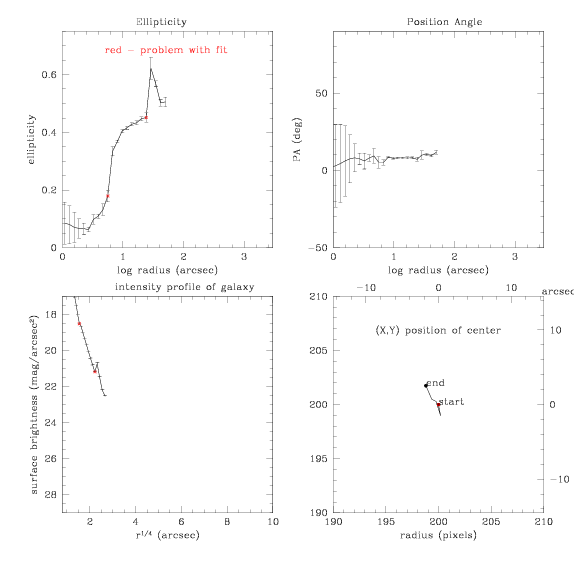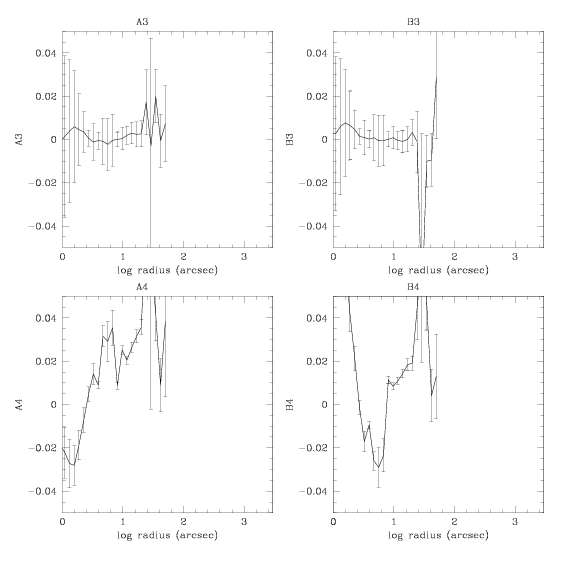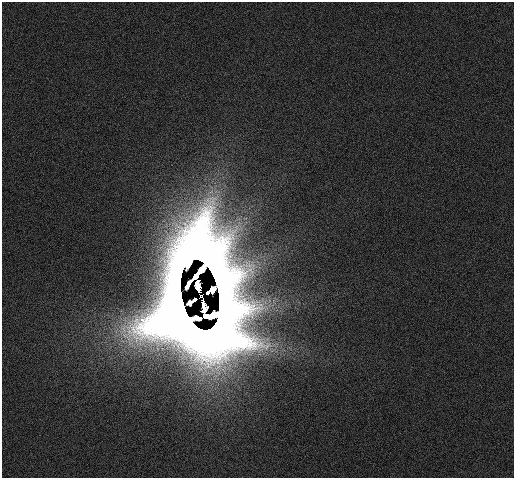Simulating Substructure
files are actually in /m87/m87/sub
GOAL: to figure out what sorts of 'substructure' are identified by our
methods - i.e. will the a3,b3,a4,b4 coefficients show a second galaxy
overlaid on the original one, will it be evident in residuals, etc, etc.
Overall steps:
add additional (fainter, offset)
galaxy to image --> analyse
add a really diffuse galaxy to the
image --> analyse
Procedure:
First make our basic elliptical galaxy with noise:
[e1.fits]
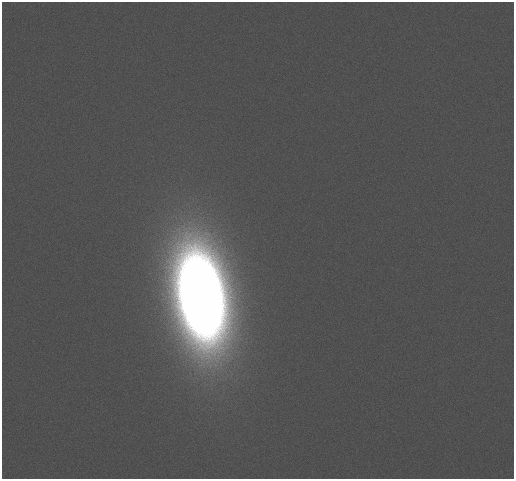
using object file:
200 200 -10 devauc 5 2
10
center is (200,200), magnitude -10, devaucouleurs profile, radius of 5,
axis ratio of 2 (e=0.5), position angle of 10 (deg)
input
=
e2.fits List of input images
(output
=
) List of output images
IF NEW IMAGE
(title = elliptical galaxy1) Image title
(ncols
=
512) Number of columns
(nlines
=
512) Number of lines
(header = artdata$stdheader.dat) Image or header keyword file
(backgro=
10.) Default background (in ADU)
OBJECT PARAMETERS
(objects=
egal2.dat) List of objects files
(xoffset=
0.) X coordinate offset
(yoffset=
0.) Y coordinate offset
(star
=
moffat) Star
(radius
=
1.) Seeing radius/scale (pixels)
(beta
=
2.5) Moffat parameter
(ar
=
1.) Axial ratio (minor/major)
(pa
=
0.) Position angle (degrees)
(distanc=
1.) Relative distance
(exptime=
1.) Exposure time
(magzero=
7.) Magnitude zero point
NOISE PARAMETERS
(gain
=
1.) Gain (electrons/ADU)
(rdnoise=
5.) Read noise (electrons)
(poisson=
yes) Add Poisson noise?
(seed
=
1) Random number seed
(comment=
yes) Add comments to image?
(mode
=
ql)
Fitting this with ellipse, we
get:
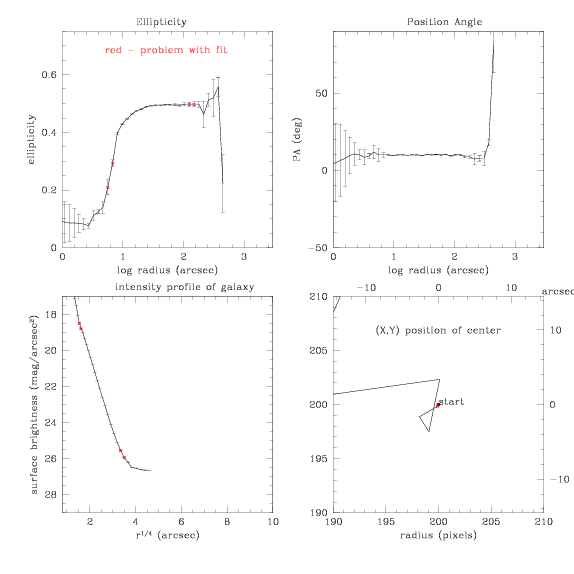
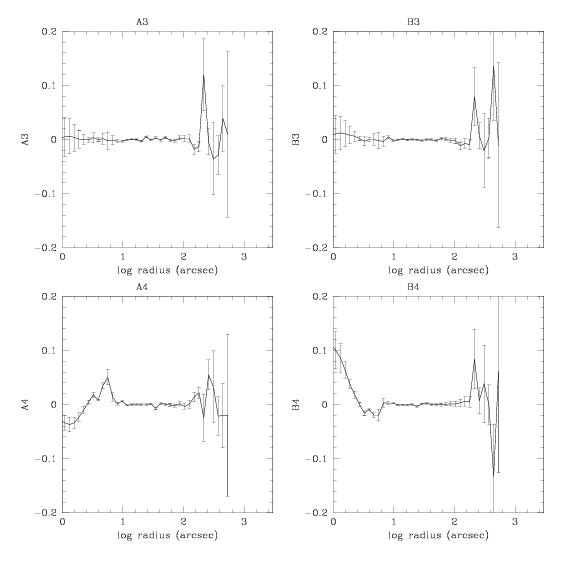
According to Jedrzejewski (1987), a negative b4 means the isophotes are
'boxy', positive b4 means they'll have 'pointed end's (like an edge on
spiral).
Modelling and subtracting from the original image, we get:
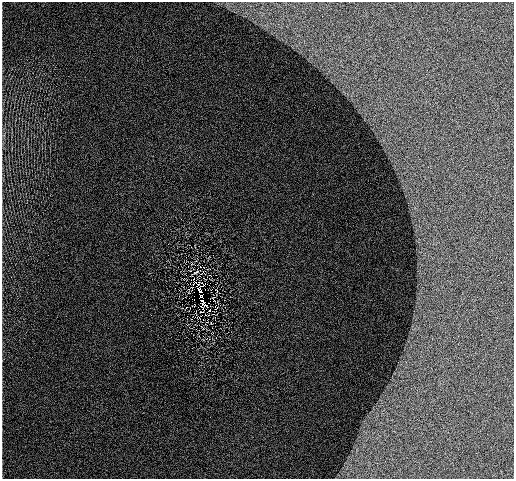
Now if we adjust our original image slightly and put a second, fairly
elliptical galaxy in it, what will the ellipse fit do? [note, I don't care
that I am adding "a galaxy", I really just want to add more light in
one region to see how the fit adjusts]
Here is another galaxy, below and to the left of our original one,
rotated quite a bit, and fairly elliptical:
[e2.fits]
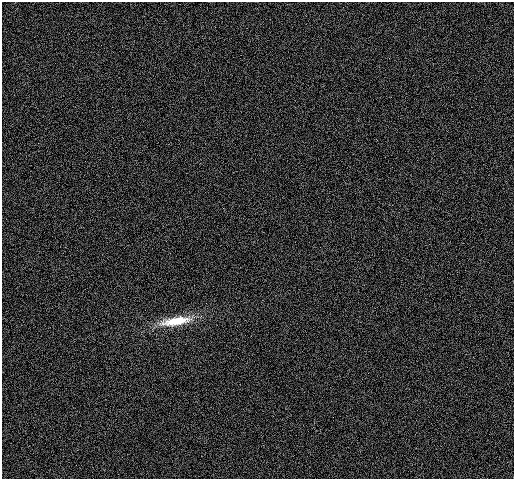
150 150 -5 devauc 5 5 100
When we combine the data files for creating these two images, we get a
composite image (with the same noise levels as either individual one):
[e3.fits]
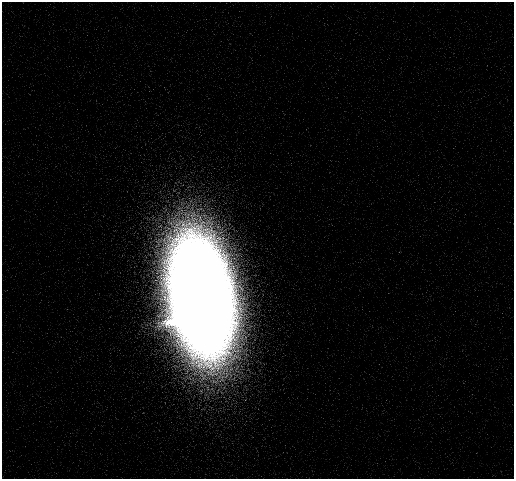
Now fitting things with ellipse,
we get:
[e3.dat]
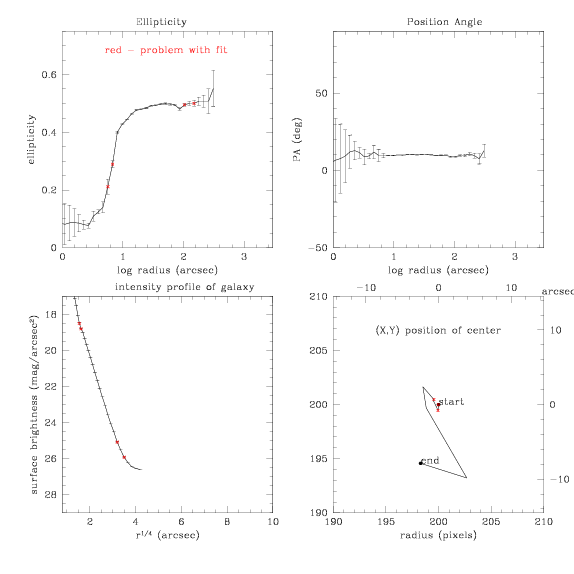
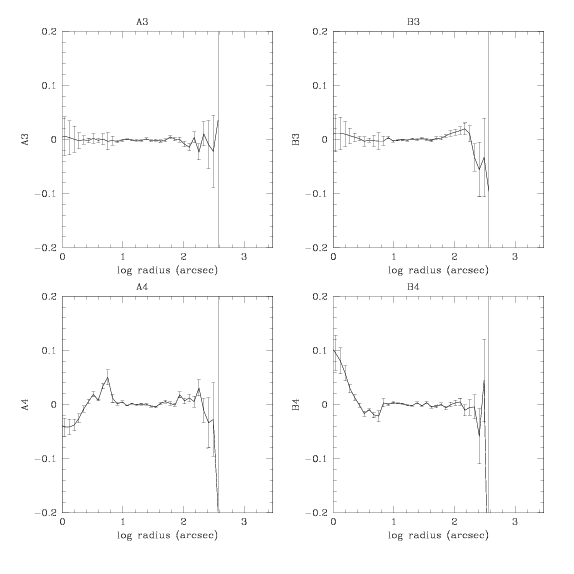
Here's the subtracted image:
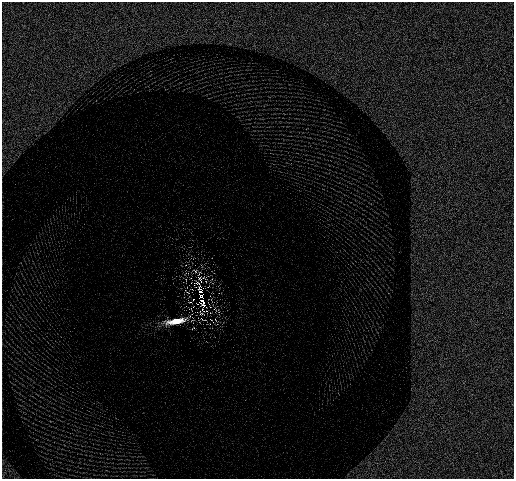
Now, we move the small additional galaxy across the original model to
see how the fits change.
...moving the small galaxy to (183,183) (when the main one is at
(200,200) results in this fit:
[e4.dat]
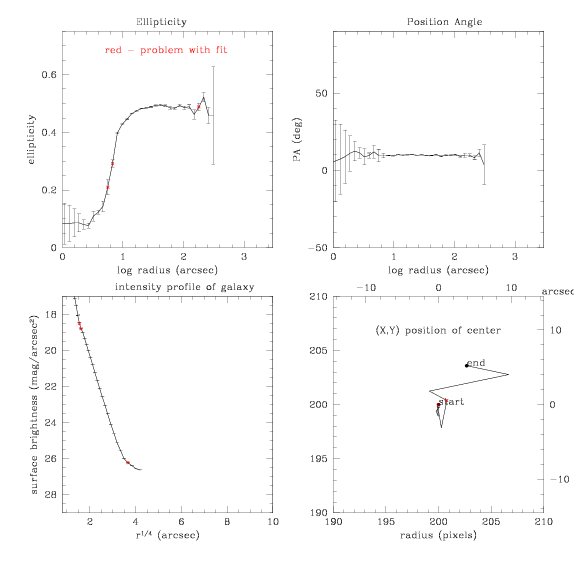
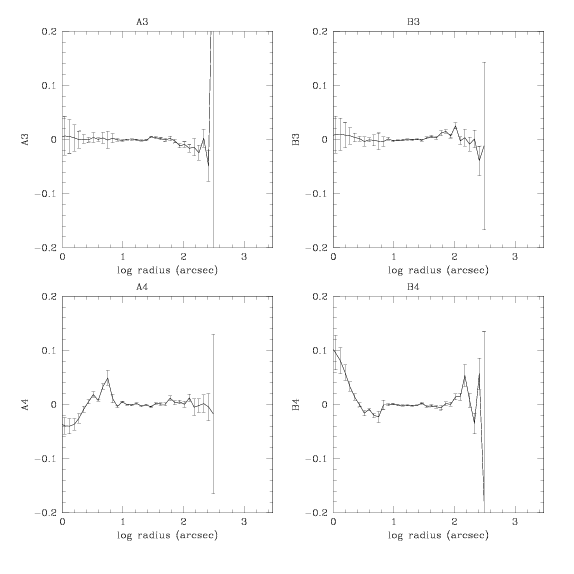
...and the subtracted image:
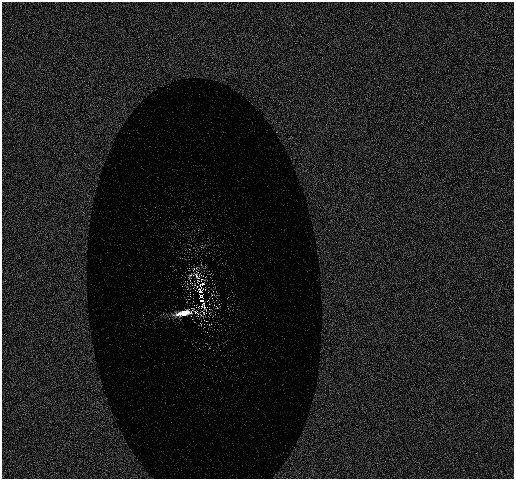
...moving small galaxy to (200,200), on top of the main one:
[e5.dat]
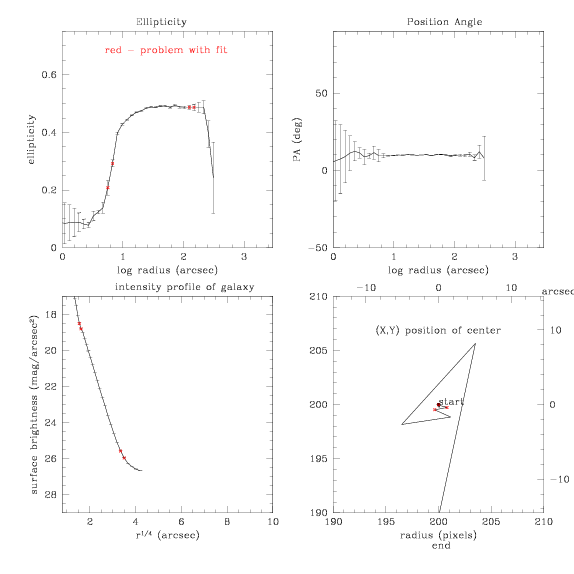
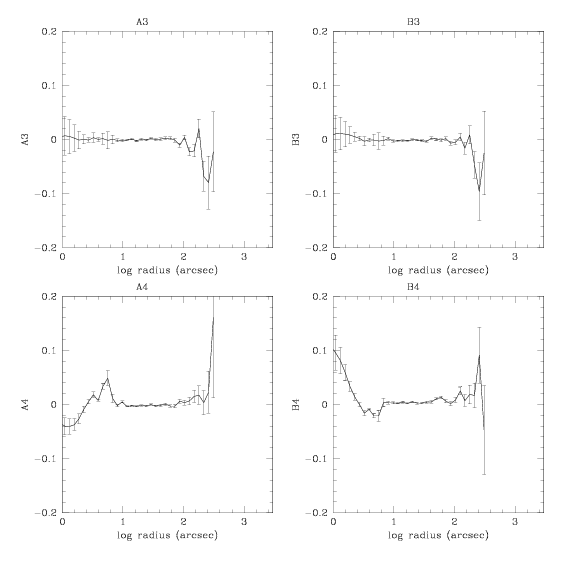
...and the subtraction:
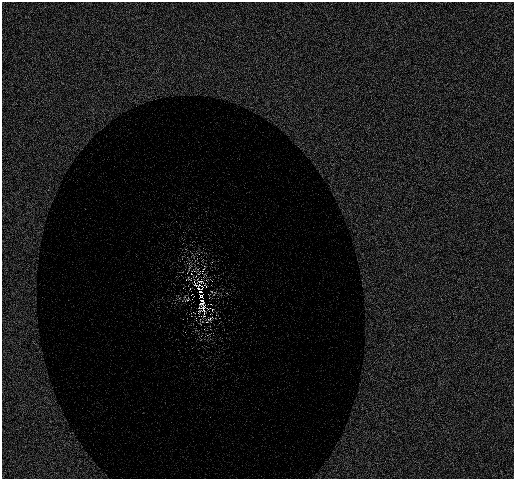
...rotating it back to 10(deg) (from its original 100(deg)) to match
the main galaxy:
[e6.dat]
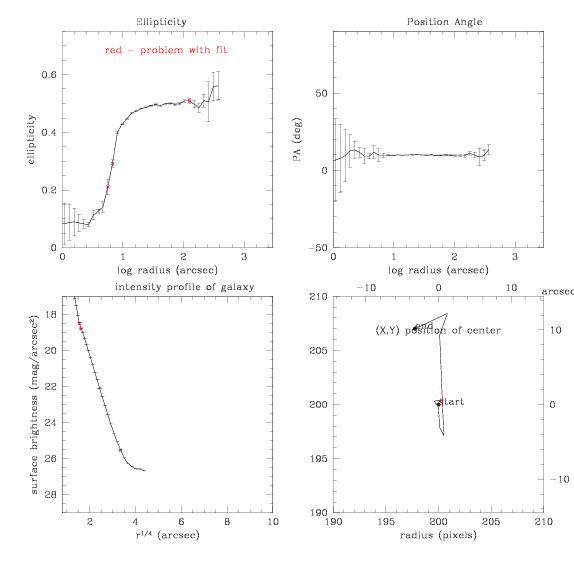
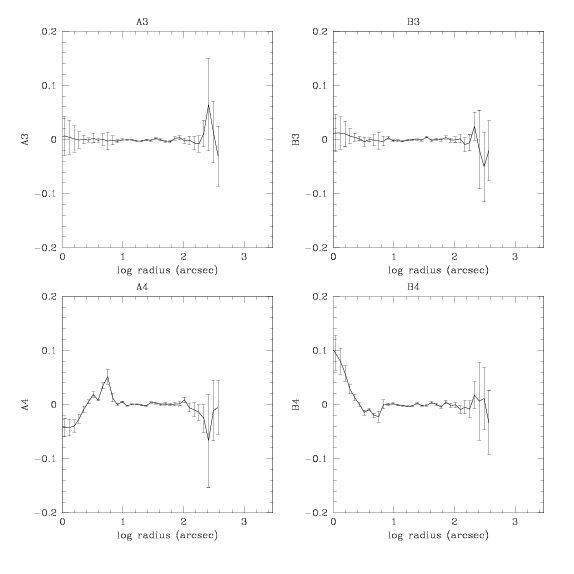
...and the subtracted image:
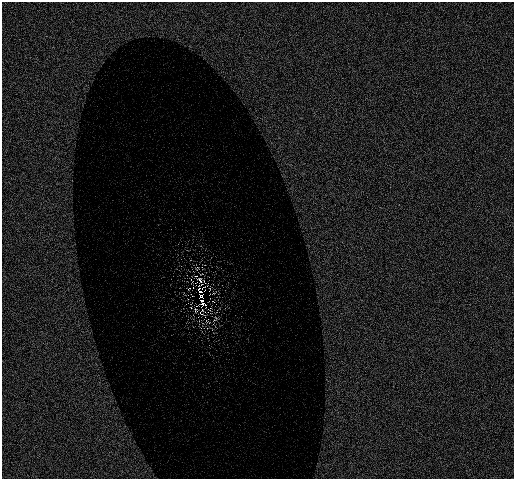
...now we go sort of crazy, moving the second galaxy to point toward
the upper right of the image and be offset to the right:
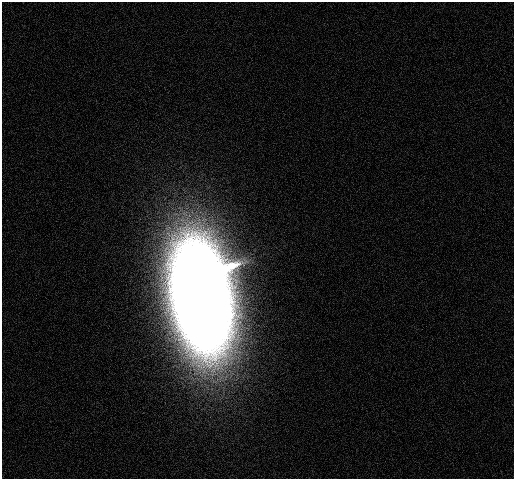
230 230 -4 devauc 5 5 110
200 200 -10 devauc 5 2 10
Here is the fit:
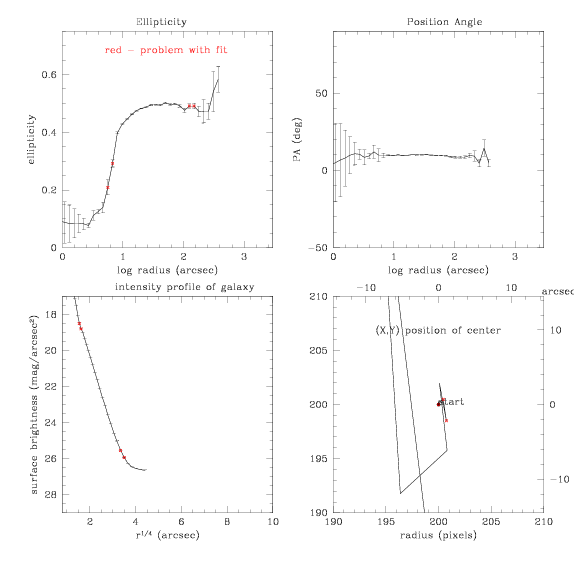
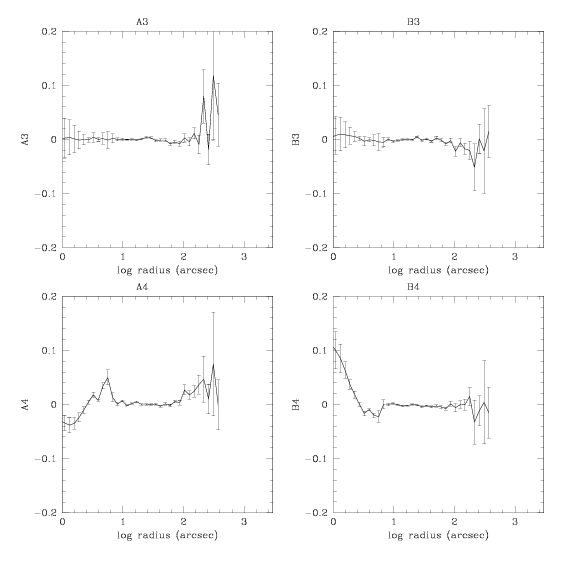
...and the subtraction:
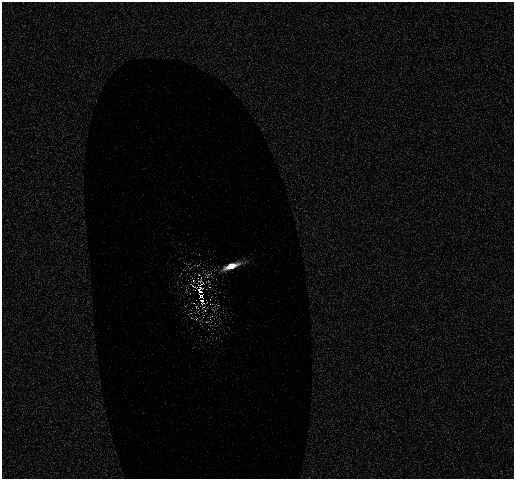
Let's try this more with a fainter and more diffuse
object... like a big dim elliptical!
Here's a "galaxy" with these parameters:
230 230 -5 expdisk 40 1 110
[e8.fits, without the main galaxy]
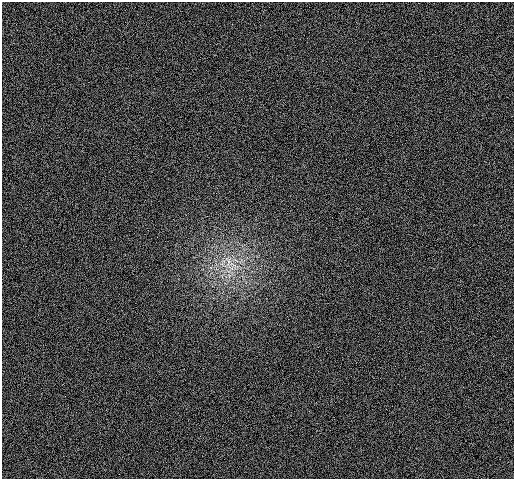
(note: this is displayed without the main galaxy because when together,
this faint light is not evident
When we use the full image (with this faint light and the main
elliptical galaxy) ellipse
gets:
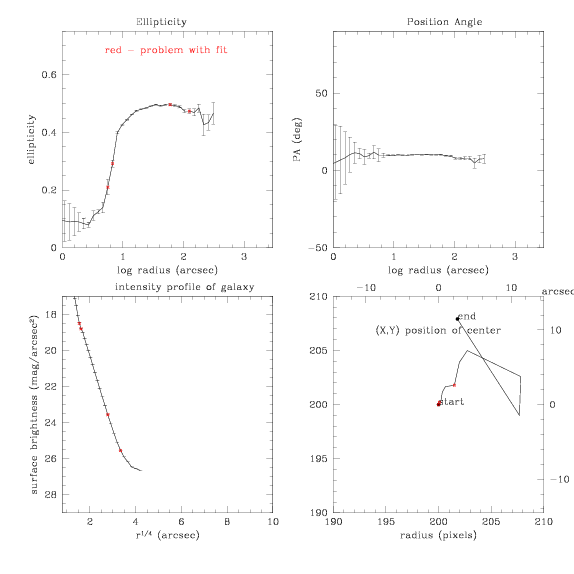
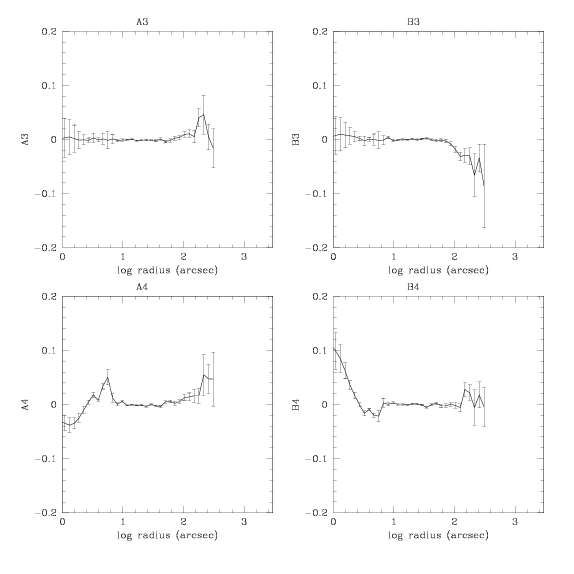
...and the subtracted image:
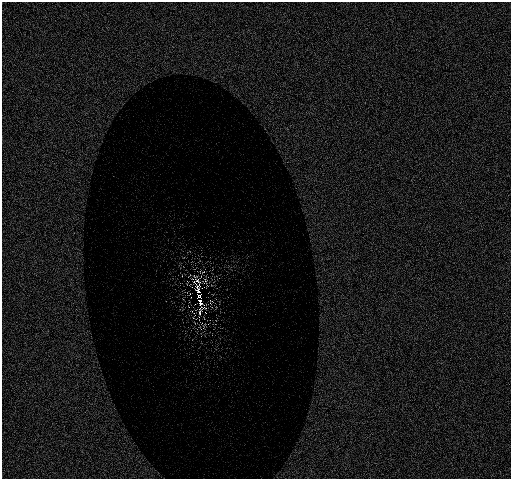
So in here the added light is apparent off to the right of the center,
but it's not as strong, relative to the image, as in our images. Let's
turn up the faint light...
Increasing magnitude of second 'galaxy' from -5 to -6. Here is what it,
alone, looks like:
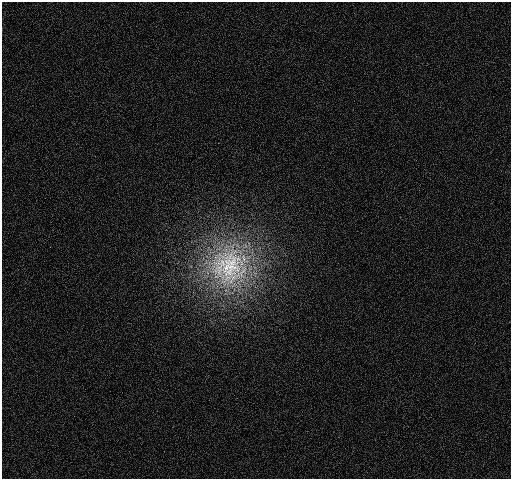
total image, galaxy and faint galaxy:
[e9.fits]
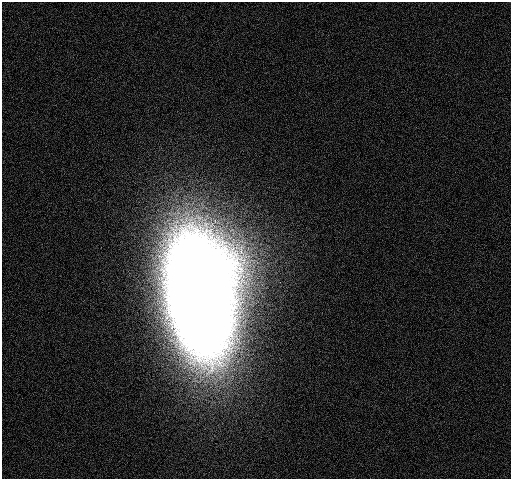
...and the ellipse fit on the
combined/total image:
[e9.dat]
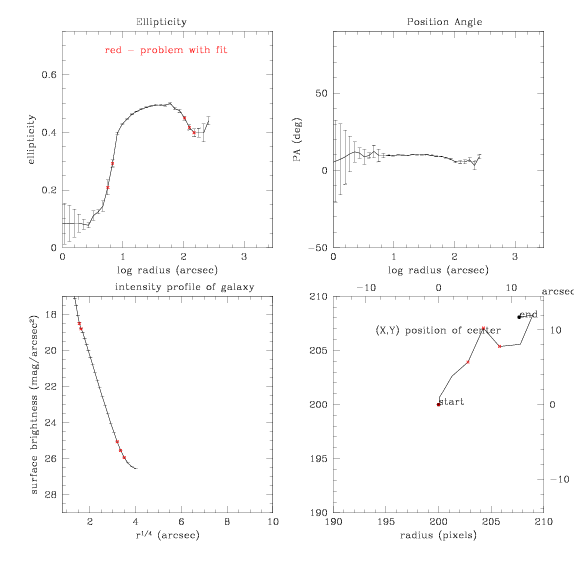
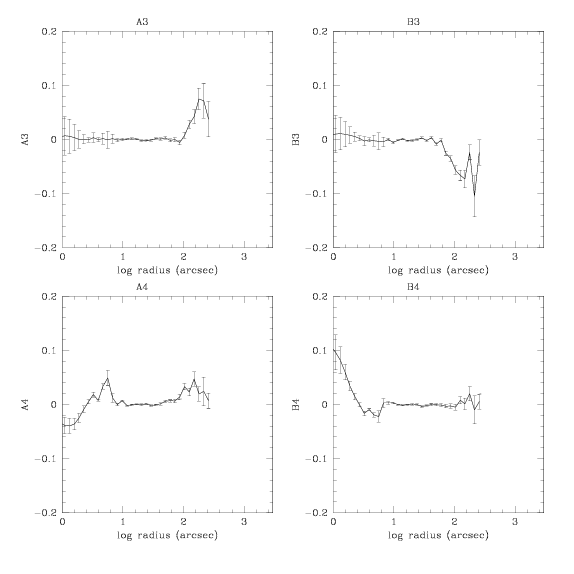
...and the subtracted image
[e9ms.fits]
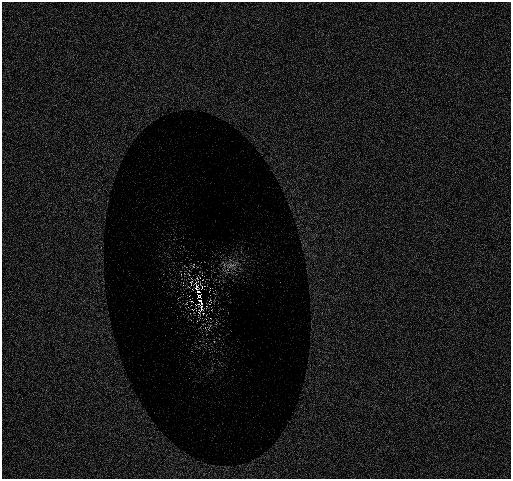
A little better, but it's still pretty faint... Also note the darker
areas above and below the bright feature.
To further and better understand what's going on here, we adjust the
parameters of the second galaxy to be extremely similar to the first.
(I'm trying to make the
a3,b3,a4,b4 parameters change.)
195 220 -6 devauc 5 1.5 10
200 200 -10 devauc 5 2 10
This means the second galaxy will be identical to the first but more
round and shifted up and slightly to the left. This should cause ellipse some biiiig problems (I
hope).
Here's what it looks like:
[e10.fits]
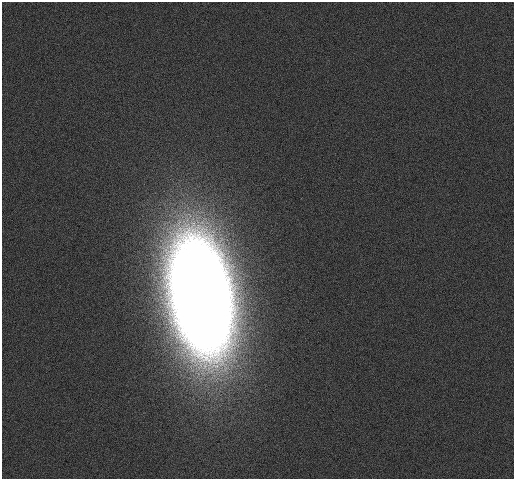
(note this is a log stretch while most of the others have been linear)
195 220 -6 devauc 5 1.5 10
200 200 -10 devauc 5 2 10
Ellipse fits:
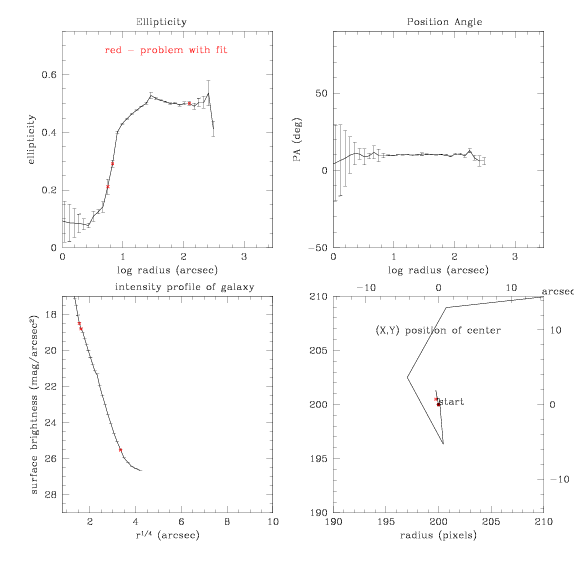
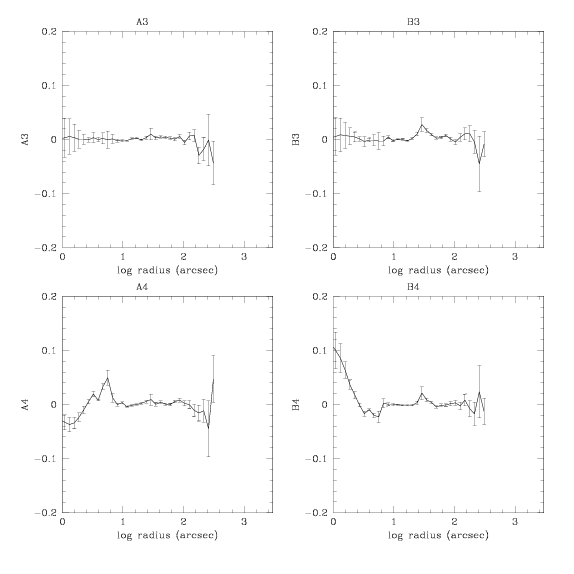
And the subtracted image
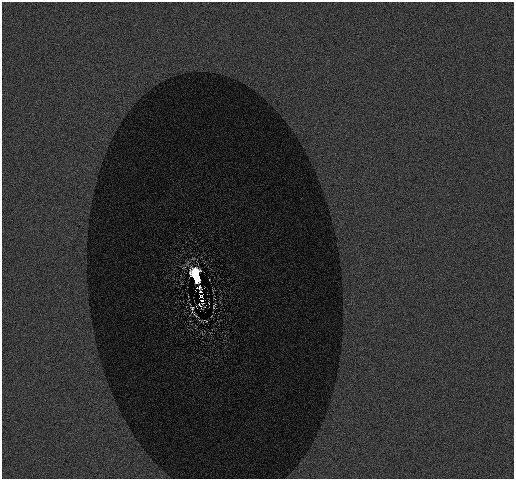
Trying another set of parameters, egal11.dat
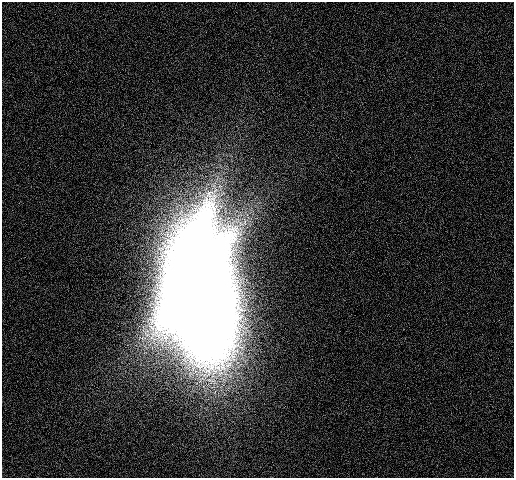
195 220 -7 devauc 5 6 320
190 240 -7 devauc 5 6 340
200 200 -10 devauc 5 2 10
And the fit:
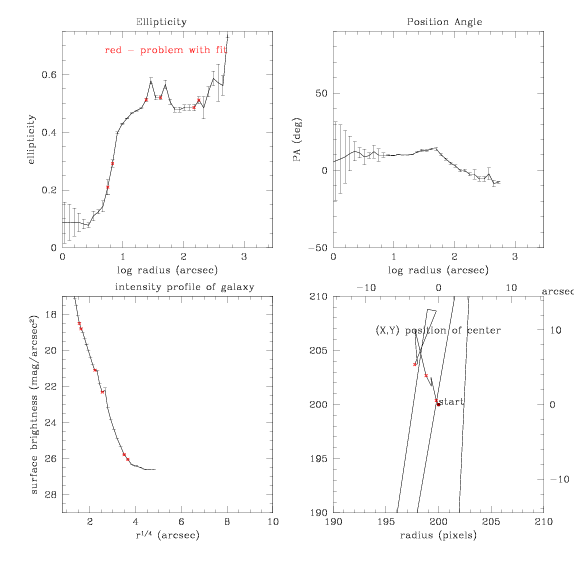
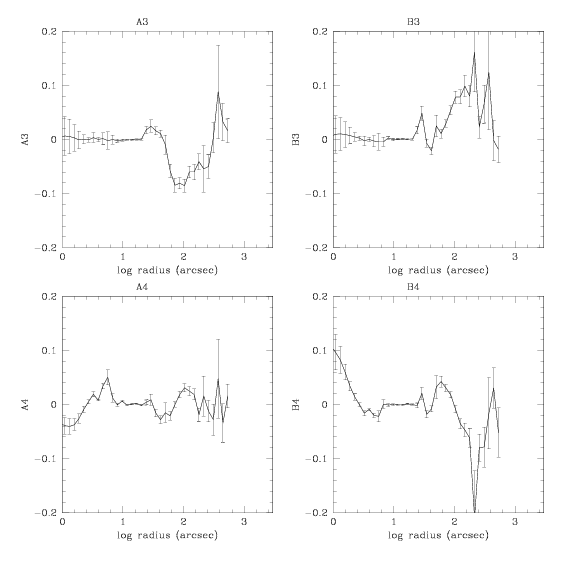
...and the subtraction:
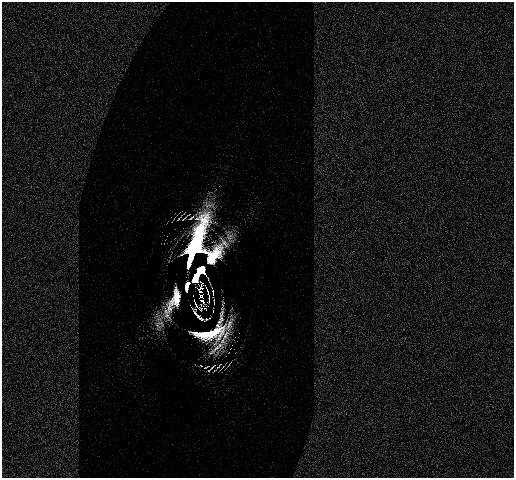
e12:
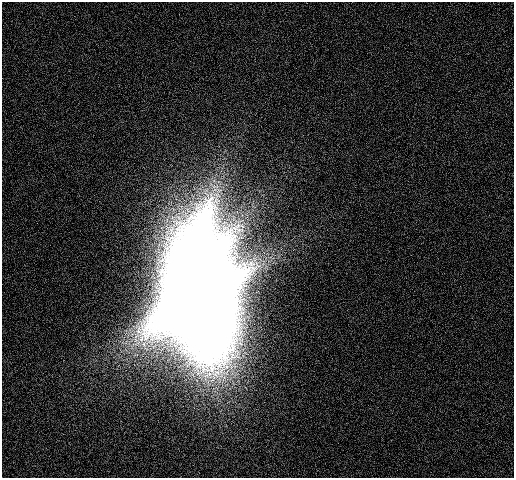
200 200 -7 devauc 5 6 300
195 220 -7 devauc 5 6 320
190 240 -7 devauc 5 6 340
200 200 -10 devauc 5 2 10
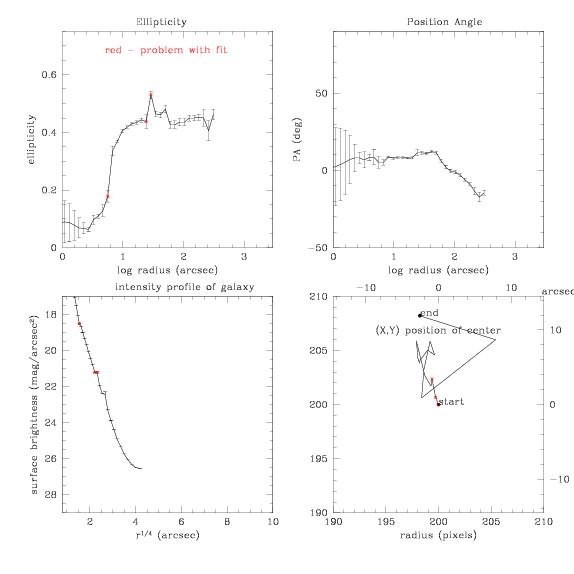
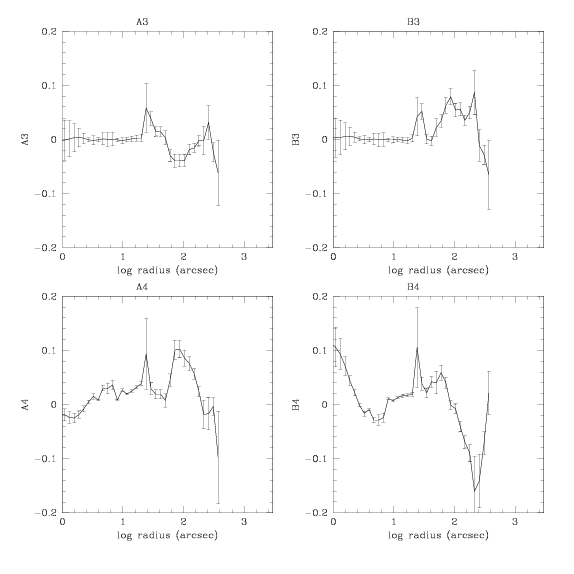
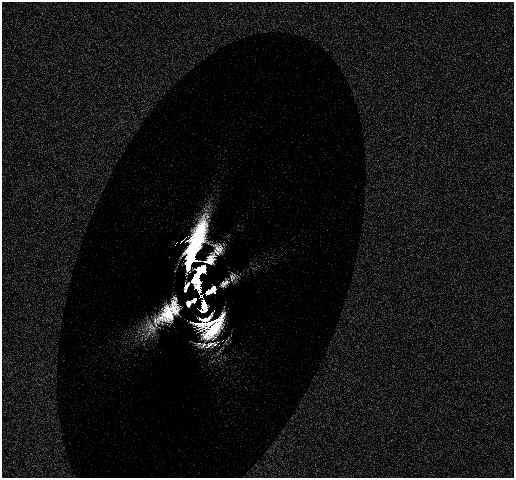
e13:
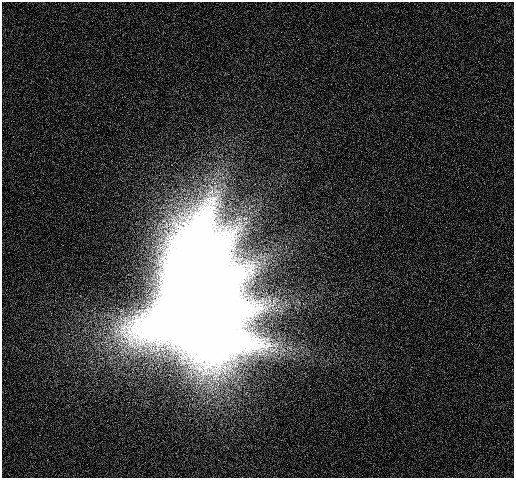
210 160 -7 devauc 5 6 260
205 180 -7 devauc 5 6 280
200 200 -7 devauc 5 6 300
195 220 -7 devauc 5 6 320
190 240 -7 devauc 5 6 340
200 200 -10 devauc 5 2 10
